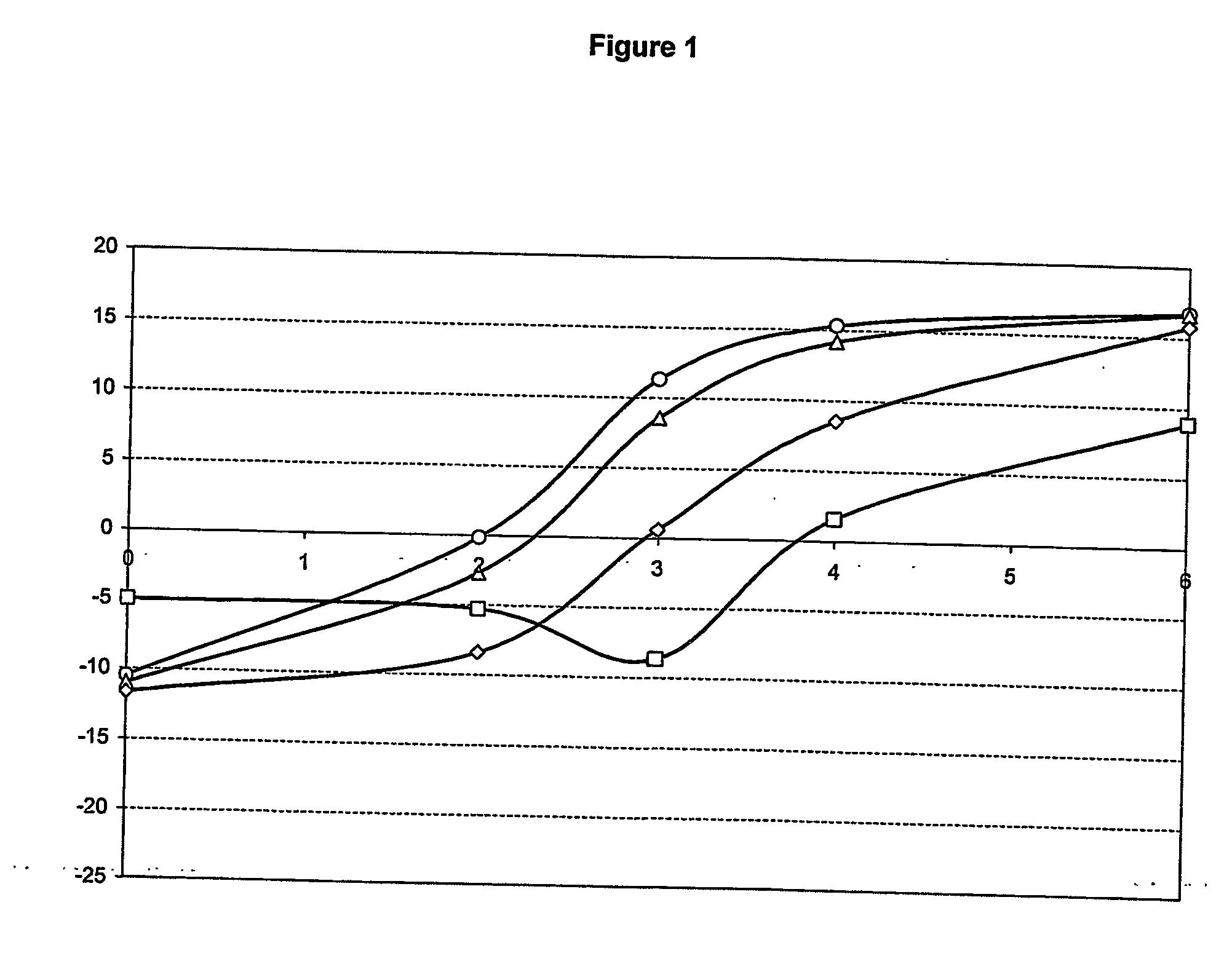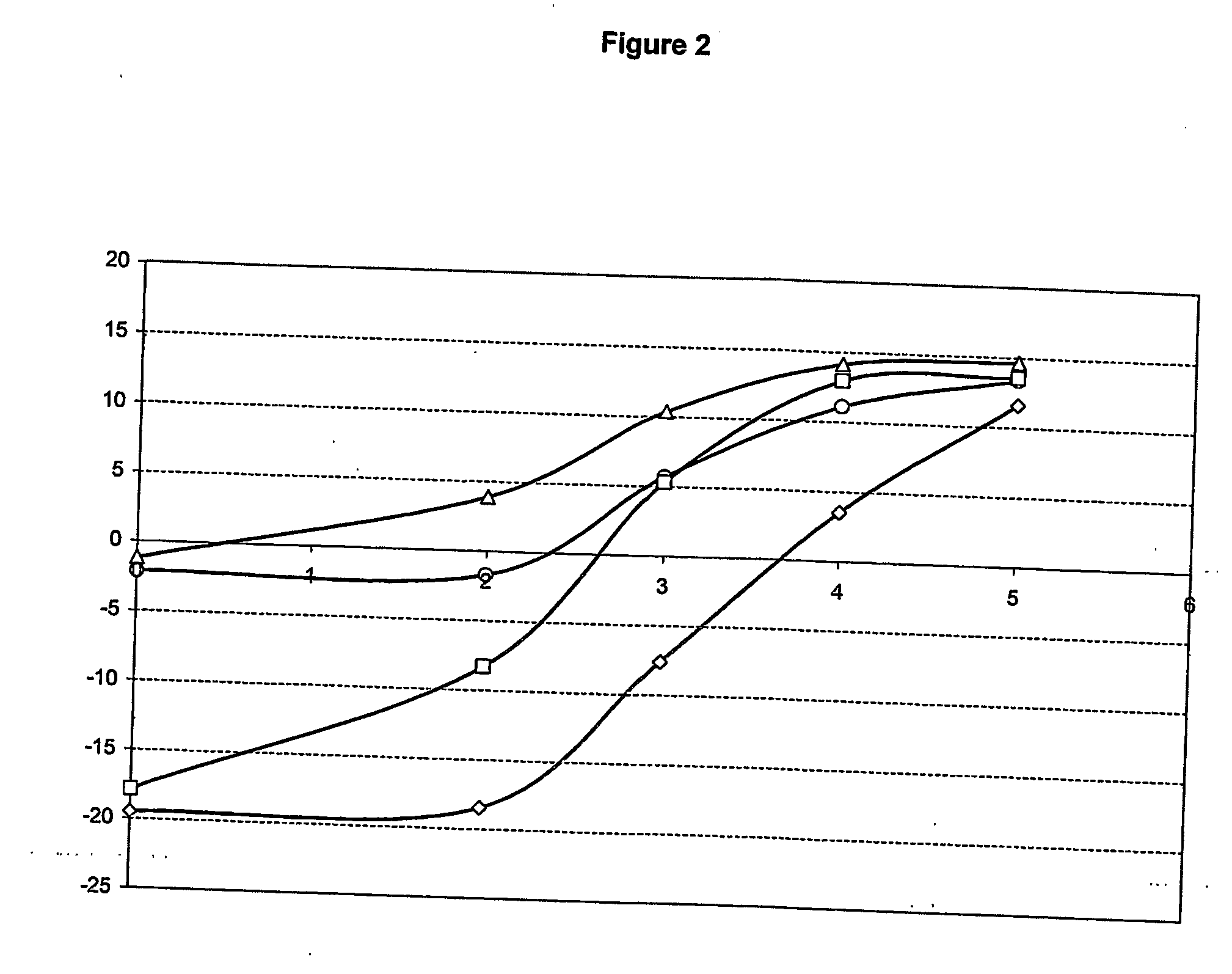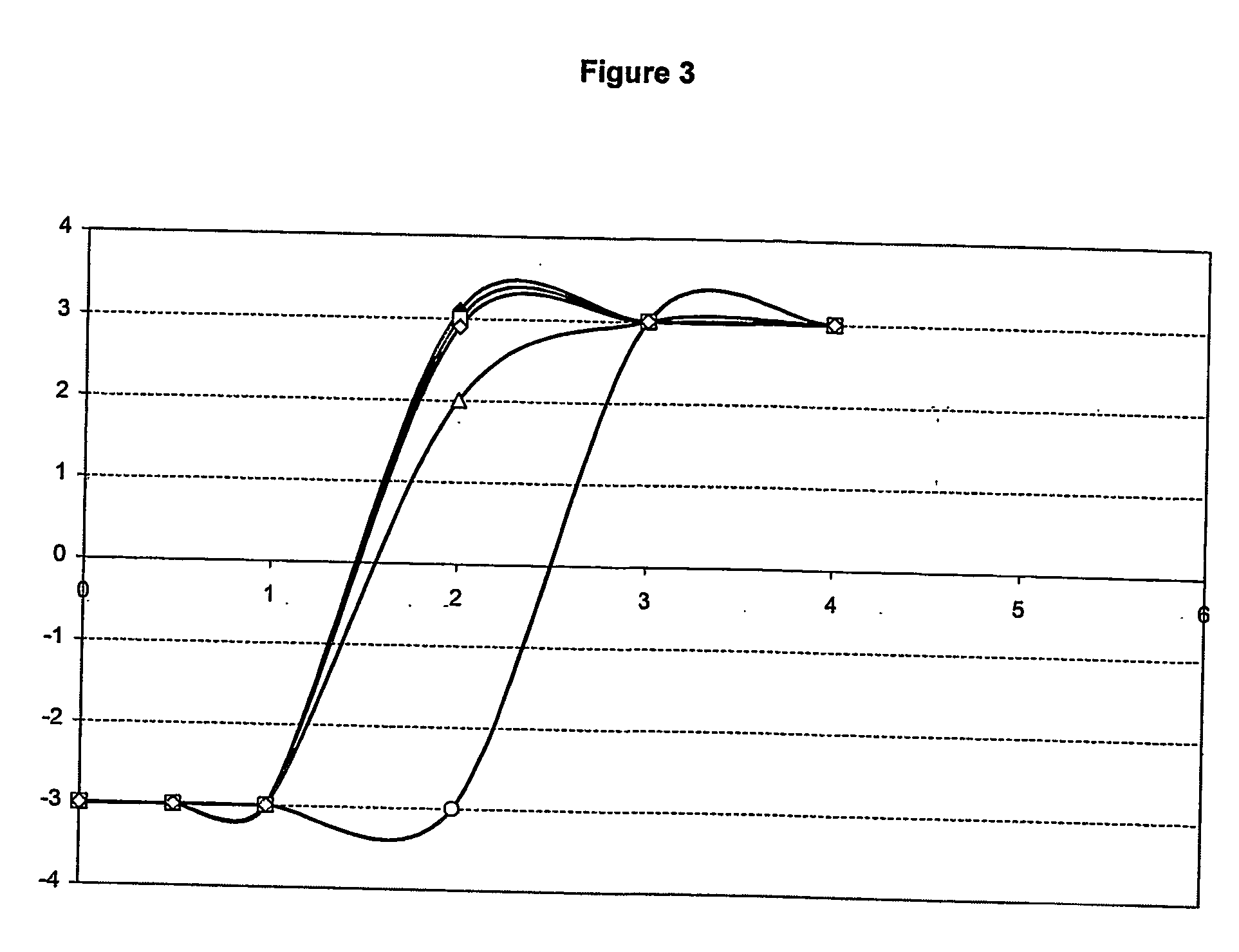Method for the determination of the presence of an antibiotic in a fluid
a technology of antibiotics and fluids, applied in the direction of microbiological testing/measurement, biochemistry apparatus and processes, etc., can solve the problem of not providing a simple procedure by which the sensitivity of certain analytes can be adjusted, the test system cannot be easily adapted to a new threshold value, and the ratio of fluid samples to test medium is exceeding 2:3
- Summary
- Abstract
- Description
- Claims
- Application Information
AI Technical Summary
Benefits of technology
Problems solved by technology
Method used
Image
Examples
example 1
Sensitivity of a Microbiological Test Method with Different Volumes of Milk in a Test System with Nutrients Added in the Form of a Tablet
[0063] A commercially available microbiological test system (Delvotest®) having 0.27 ml of test medium containing agar, CFU's of Bacillus stearothermophilus var. calidolactis, an antifolate, and the indicator Bromocresol Purple was investigated using milk with added penicillin G in concentrations of 0, 2, 3, 4 and 6 ppb. These five milk samples were applied to the test systems in a series of four different volumes, ie. 0.05 ml, 0.10 ml (the Delvotest® recommended volume), 0.20 ml and 0.30 ml. Before addition of the milk, a tablet with nutrients was applied on the test medium. After the milk was added, the tests were incubated for 2.6 hours at 64° C. If there are no or little antibiotics that inhibit the growth of the test organism, after some time, an acid environment is formed by the growing microorganisms and the indicator changes color from blu...
example 2
Sensitivity of a Microbiological Test Method with Different Volumes of Milk at Different Time Intervals in a Test System with Nutrients Added in the Form of a Tablet
[0065] A similar experimental setup as in Example 1 was used. However, in this case the penicillin G concentrations were 0, 2, 3, 4 and 5 ppb and the volumes of milk that were investigated were 0.10 ml and 0.30 ml. Test systems were incubated at 64° C. (for 2.4 h, normally referred to as the point of indicator change, and 3.0 h, normally referred to as the point of reading). The results, as graphically represented in FIG. 2, again clearly show that sensitivity increases with increasing milk volume (compare Δ with ◯ and □ with ⋄). Furthermore, it becomes clear from FIG. 2 that an increase in milk volume leads to stable results over time and in the concentration range tested. With this is meant that the result at, for instance, 4 ppb penicillin G with 0.30 ml of milk after 2.4 h (see line Δ at 4 ppb: Z=14) is almost the s...
example 3
Sensitivity of a Microbiological Test Method with Different Volumes of Milk in a Test System with Nutrients Present in the Test Medium
[0066] A commercially available microbiolgical test system (Delvotest®) having 0.15 ml of test medium containing agar, CFU's of Bacillus stearothermophilus var. calidolactis, an antifolate, nutrients, and the indicator Bromocresol Purple was investigated using milk with added penicillin G in concentrations of 0, 0.5, 1, 2, 3 and 4 ppb. These six different milk samples were applied to the test systems in a series of five different volumes, i.e. 0.05 ml, 0.10 ml (the Delvotest® recommended volume), 0.15 ml, 0.20 ml and 0.30 ml. After the milk was added, the tests were incubated for 3 hours at a temperature of 64° C. If there are no antibiotics (or only little) that inhibit the growth of the test organism, after a certain amount of time, an acid environment is formed by the growing microorganisms. Then, the color of the indicator changes from blue / purpl...
PUM
| Property | Measurement | Unit |
|---|---|---|
| volume | aaaaa | aaaaa |
| volume | aaaaa | aaaaa |
| volume | aaaaa | aaaaa |
Abstract
Description
Claims
Application Information
 Login to View More
Login to View More - R&D
- Intellectual Property
- Life Sciences
- Materials
- Tech Scout
- Unparalleled Data Quality
- Higher Quality Content
- 60% Fewer Hallucinations
Browse by: Latest US Patents, China's latest patents, Technical Efficacy Thesaurus, Application Domain, Technology Topic, Popular Technical Reports.
© 2025 PatSnap. All rights reserved.Legal|Privacy policy|Modern Slavery Act Transparency Statement|Sitemap|About US| Contact US: help@patsnap.com



